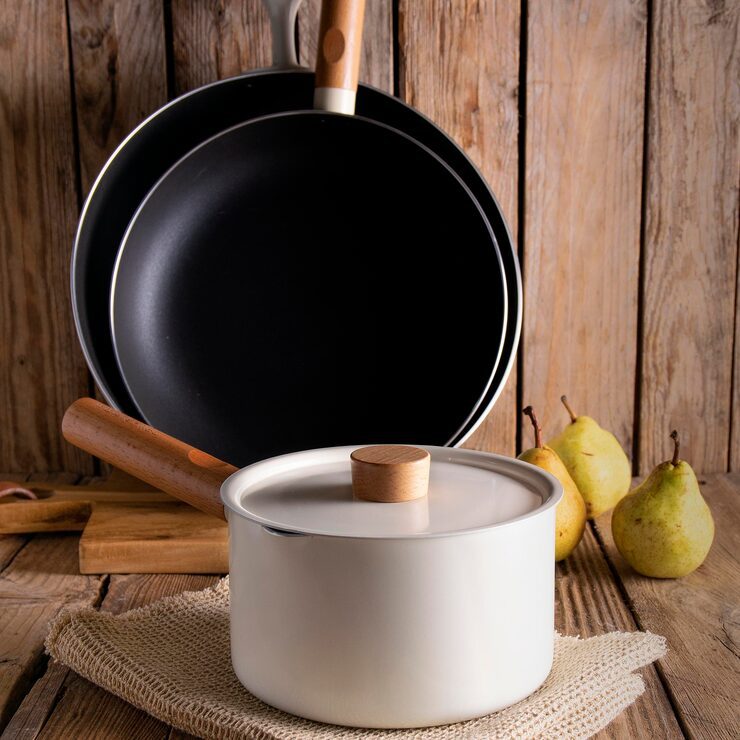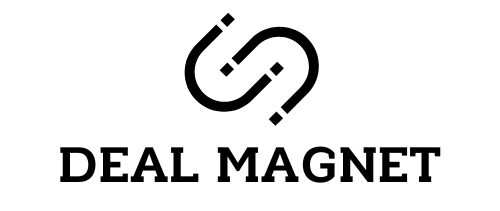The heart of every kitchen lies in its cookware. Whether you’re a beginner learning to sauté vegetables or a seasoned home chef whipping up gourmet meals, the right pots and pans set can make all the difference. A nonstick cookware set is one of the most popular choices today because it offers easy food release, effortless cleaning, and reliable performance for everyday cooking.
With countless sets available in different sizes, materials, and price ranges, choosing the best one can feel overwhelming. This buying guide will break down the key factors to consider, compare different options, highlight the pros and cons, and provide insights from experts and home cooks.
“Dealmagnet.uk is a participant in the Amazon EU Associates Programme, an affiliate advertising programme designed to provide a means for sites to earn advertising fees by advertising and linking to Amazon.co.uk.”
What to Consider Before Buying a Pots and Pans Set
1. Material and Construction
The material impacts heat distribution, durability, and cooking style.
- Aluminum: Lightweight, quick heating, often paired with a nonstick coating.
- Stainless Steel: Durable and resistant to scratches, but usually paired with an aluminum core for even heating.
- Hard-Anodized Aluminum: Stronger than regular aluminum, resists warping, and works well with nonstick coatings.
Tip: Look for sets with multi-layer bases for even heat distribution and no hot spots.

2. Nonstick Coating
The coating is what makes cleanup easy and reduces the need for oil or butter.
- PTFE-based coatings: Provide excellent nonstick performance but require careful handling to avoid scratches.
- Ceramic coatings: Eco-friendly and free from certain chemicals, but may wear down faster.
3. Number of Pieces
Cookware sets can include anywhere from 5 to 15+ pieces. A standard set often includes:
- Frying pans/skillets (small and large)
- Saucepan with lid
- Stockpot with lid
- Sauté pan
- Extra utensils like spatulas or spoons
Advice: Count lids and utensils separately—sometimes a “12-piece set” may only include six actual cooking vessels.
4. Compatibility with Cooktops
- Gas & Electric: Most nonstick cookware works well.
- Induction: Requires a magnetic base—check compatibility if you have an induction stove.
5. Oven-Safe and Dishwasher-Safe
Some nonstick sets are oven-safe up to certain temperatures, letting you finish dishes in the oven. Dishwasher-safe cookware is convenient, but hand-washing extends the life of the coating.
6. Handles and Lids
- Handles: Ergonomic, heat-resistant handles improve comfort and safety.
- Lids: Tempered glass lids are popular because they let you monitor cooking without lifting them.
Product Summary Table (General Comparison)
| Feature | Entry-Level Sets | Mid-Range Sets | Premium Sets |
|---|---|---|---|
| Material | Basic aluminum | Hard-anodized aluminum | Stainless steel/aluminum combo |
| Nonstick Type | Standard PTFE | Enhanced PTFE or ceramic | Multi-layer reinforced |
| Pieces Included | 5–8 pieces | 10–12 pieces | 12–15+ pieces |
| Cooktop Compatibility | Gas & electric | Gas, electric, some induction | Universal, incl. induction |
| Oven Safe | Up to 350°F | 400–450°F | 500°F or higher |
| Best For | Beginners, light cooking | Families, daily use | Serious home chefs |
Pros & Cons of Nonstick Cookware Sets
Pros
- ✅ Food releases easily, reducing the need for excess oil.
- ✅ Quick cleanup, ideal for busy households.
- ✅ Lightweight and user-friendly, even for beginners.
- ✅ Affordable sets available for all budgets.
- ✅ Great for cooking eggs, pancakes, fish, and delicate foods.
Cons
- ❌ Nonstick coating can wear off over time.
- ❌ Some coatings are sensitive to metal utensils.
- ❌ Not ideal for very high-heat searing.
- ❌ Requires careful maintenance to avoid scratches.
- ❌ Lifespan is shorter compared to high-end stainless steel cookware.
Who It’s Best For
- Beginners: Nonstick cookware makes cooking less intimidating and cleaning hassle-free.
- Families: Easy-to-use pots and pans are perfect for quick meals and daily cooking.
- Health-conscious cooks: Allows low-oil or oil-free cooking.
- Busy professionals: Dishwasher-friendly sets save valuable time.
- Apartment dwellers: Compact, lightweight sets are easy to store in small kitchens.
Real Insights and Expert Opinions
Many home cooks appreciate how nonstick sets simplify cooking eggs, pancakes, and stir-fries without sticking or burning. Experts point out that while stainless steel cookware offers long-term durability, a nonstick set is often more practical for everyday tasks.
Personal experiences also highlight that handwashing extends nonstick life by years. A common mistake is stacking pots and pans without protection—this scratches the coating. Using soft pan protectors or simply placing paper towels between stacked pans prevents damage.
Professional chefs often recommend having a mix of cookware: nonstick pans for delicate cooking and stainless steel or cast iron for browning and searing.
FAQs
Q1: How long does a nonstick cookware set last?
With proper care, most sets last 3–5 years. Avoiding metal utensils and high heat extends the lifespan.
Q2: Can I use metal utensils on nonstick pans?
It’s best to use wooden, silicone, or plastic utensils to prevent scratching.
Q3: Is nonstick cookware safe?
Modern nonstick coatings are generally safe when used correctly. Avoid overheating empty pans to prevent damage.
Q4: Can nonstick cookware go in the oven?
Yes, but always check the temperature limit. Entry-level sets may only handle 350°F, while premium sets go up to 500°F.
Q5: How do I clean nonstick pots and pans?
Hand-wash with warm, soapy water and a soft sponge. Avoid abrasive cleaners or scouring pads.
Final Recommendation
A nonstick cookware set is a versatile and essential addition to any kitchen. Whether you’re preparing quick weekday meals or experimenting with new recipes, these sets make cooking easier and more enjoyable.
- For beginners and small households, entry-level sets with basic essentials are affordable and practical.
- For daily home cooks, mid-range sets strike the best balance between durability, versatility, and price.
- For serious chefs or families who cook frequently, premium sets offer extended oven safety, better compatibility with induction cooktops, and stronger coatings.
Investing in the right pots and pans means more than just convenience—it ensures healthier meals with less oil, faster cleanup, and an enjoyable cooking experience. Pair your cookware with the right utensils and proper care, and you’ll have a reliable kitchen partner for years to come.



